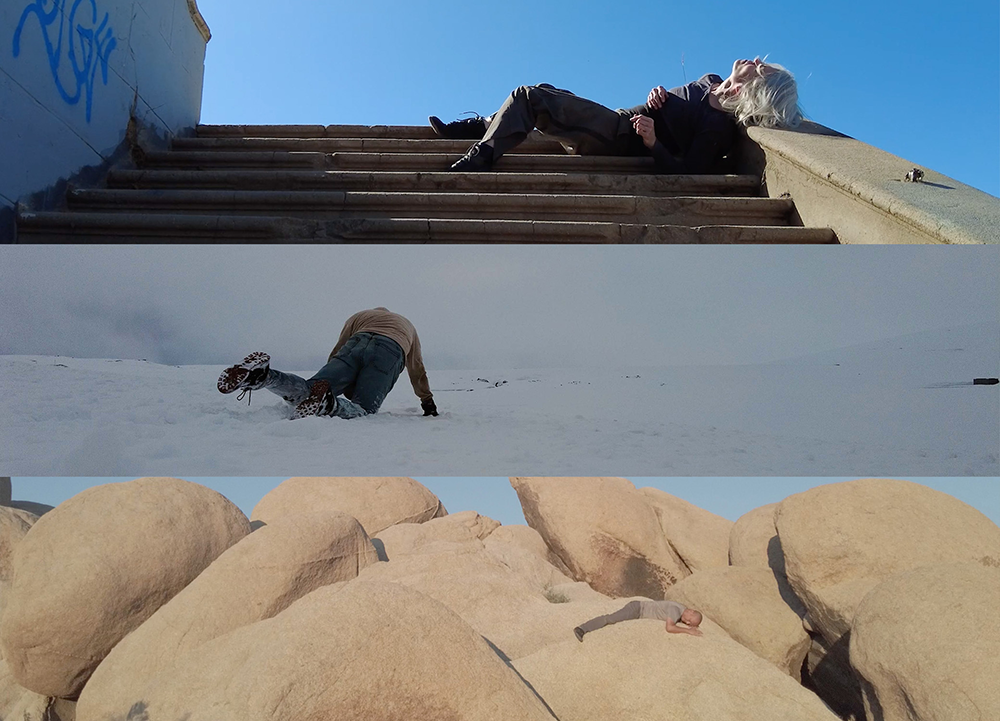Three movement artists—Maria Gillespie, Nguyên Nguyên and Kevin Williamson—are grandly projected on as many walls but revealed in divergent locations. The panoramic videos depicting the bodily trials of these artists in demanding landscapes envelop the 2800 square-foot gallery as the performers shift from wall to wall and location to location; climbing, crawling, rolling. Yet, like memory and expectation, they each take their unnamed yet recognizable landscape with them. They are far from home, evidenced by the three cubbies on the unprojected wall, where the performers are seen in a miniscule video reflection of their endurance travels.
Williamson tramps through snow and stumbles over bogland as location dictates his path ultimately toward the sea, a desired target that appears to relocate in response to his approach. There is a painful yet elegant endurance in his earnest trek aimed at an unknown terminus. His no doubt painful contortions are his chosen demands upon his elbows, knees and hips as he slides down hills, sometimes tumbling, often reaching for the few and small brittle shrubs around him that offer little purchase. Perhaps his journey is as much one of remembrance as rigor, for opposite the vast panoramic projections are a trio of small compartments, open closets of mementos. In one of the compartments, where fragments of broken crockery are strewn over shattered bark, viewers may watch miniature videos of the alternating performers, in and out of their exertions. Williams is first seen shaving away the ragged beard suggestive of his marshland trials, then coloring his lips a gleaming ruby red and blowing us a kiss.

“to get there from here,” still, 2022. Photo credit: Gillespie, Nguyen, Williamson. Courtesy of the artists and Williamson Gallery, Scripps College.
Gillespie, hair gone white in search of her past, visits an abandoned home then turns away as if the past is no longer able to reveal its secret histories: a pity and a mercy. It is too weatherbeaten, too desiccated to speak. She moves on, rolling herself upward then downward over stone stairs, toward and away from the sun, climbs a shifting and indifferent sand dune, then digs in the swollen earthen muck, yet the vast emptiness withholds its secrets. Her corresponding cubicle is walled with abandoned shoes, tattered and unlaced, large, small and lost.
Between standing stones Nguyên slithers with eyes closed, his hands smoothly feeling his way over the wind-worn surfaces. He uses his outstretched arms, pliable not stiff, to navigate a sightless path between the menhirs. In another scene, this one distinctly man-made, the artist runs his fingers and tilted shoulder along a cement wall while his long shadow protrudes before him like a divining rod. Once more, this time in a location that suggests the border between city and wilderness, Nguyên comes to a barrier fence and follows along it, where it leads is unknown. The last cubicle—perhaps his, possibly all of theirs—is laced with disparate curtains, and a crudely layered shrine holding mysteries that continue to deepen. The projections then repeat their stories, as if the aching figures having clearly been given one lesson cannot help but ache and yearn for one more.


